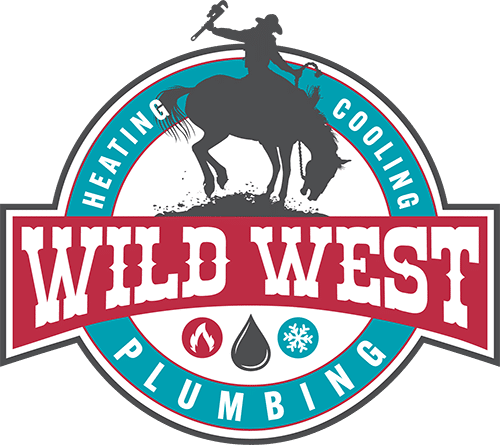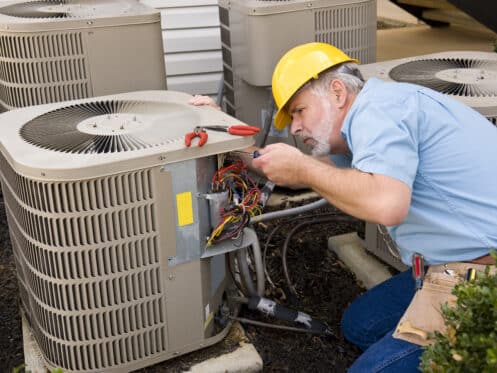It’s common to hear from property owners that they didn’t know there was something they were supposed to do for their HVAC system aside from repairing it when it breaks down. Too many property owners find out after the system has been impacted that maintenance is an important part of caring for a furnace or air conditioner. Consider these eight critical reasons why maintenance is imperative for getting the most from your system throughout the year.
1. Preventable Wear
Your HVAC system creates heat, has electricity running through it, and vibrates as it runs. The vibration it creates primarily comes from the spinning circulating fan, condensing unit fan, and the compressor outside. However, the result of that vibration is loosened mounting bolts and electrical connections.
When mounting bolts loosen, it allows the components to vibrate excessively. Loosened electrical connections increase the electrical resistance, increasing the heat that the system has to deal with within the electrical components.
All of this adds excessive wear to the components involved. This excessive wear means that those components will not last as long as the manufacturer intended. Routine HVAC maintenance includes tightening the mounting hardware and electrical connections in the spring and fall to reduce the overall wear the system experiences.
Additionally, a technician will test the circulating fan wheel and balance it if needed. An off-balance fan wheel will put additional strain on the blower motor spindle, causing wear on the blower motor.
2. Energy Consumption
Your home’s HVAC system is one of the major consumers of energy in your home, and there’s little you can do to drastically reduce it. However, certain things make the system consume more energy than normal or than it’s rated to consume.
At a high level, the variables that affect how much energy it consumes include the outside temperature, your home’s insulation, the amount of electrical resistance within the system, and how well it circulates air through the system and around your home.
Routine maintenance works on multiple levels to help keep electrical resistance at the intended level and improve airflow. We already discussed how maintenance improves resistance. Your technician does two things to help with air circulation. First, they clean the critical components of the system where restrictions commonly occur. This includes the circulating fan wheel, evaporator coil, condensing coil, and heat exchanger.
Next, they run a series of tests to ensure that the system is circulating the proper amount of air. First, they’ll evaluate the heating or cooling cycle length to ensure that it’s not short cycling or running longer than normal cycles. They’ll also test the blower motor to ensure that it’s spinning the fan wheel at the right speed to pull the proper amount of air into the system and create the right pressures at the return and supply vents.
3. Home Comfort
The idea behind your HVAC system goes beyond keeping your home safe over the height of summer heat and the frigid weather in the winter. Rather, the real goal is to keep your home comfortable throughout the year for anyone inside. To accomplish this, the system not only has to produce warm or cool air but must move it around your home more or less evenly.
One of the goals of the cleaning and tuning your maintenance technician will perform during maintenance is designed to maintain how the air flows into and out of your system. In a forced air system, the conditioned air moves throughout your home due to the pressures created as your system runs.
The air coming from your supply vents creates positive pressure, and the air moving into the return vents creates negative air pressure. When your system has proper air balance, it causes the conditioned air to move toward where there’s low pressure, distributing it throughout your home.
However, when the system doesn’t move the appropriate amount of air, it fails to create the proper level of positive or negative air pressure. The result is some areas of your home that aren’t properly conditioned, making it less comfortable. By testing, cleaning, and tuning the components responsible for moving air, your technician is working to ensure the air is distributed throughout your home properly.
4. Manufacturer Warranty
Most new HVAC installations come with a warranty from the manufacturer to cover defects. However, manufacturers also understand that mechanical systems need routine maintenance to continue working effectively. This is why one of the terms included in the warranty is often that the system will receive routine maintenance. Additionally, most warranties stipulate that a professional technician must perform all services on the system, including maintenance, to reduce the risk of accidental damage.
5. Annual and Lifetime Repairs
We’ve already talked about how much strain your system can experience when you neglect maintenance. Boil that down, and what you’re looking at is increased repairs on an annual basis and across the lifetime of the system. Strain-related repairs drastically increase the annualized operating costs of your system, which you can prevent simply by ensuring your system receives the recommended furnace and AC maintenance, usually in the fall and spring respectively.
6. System Service Life
According to various manufacturers, property owners should expect to get 15 to 20 years from their gas furnace or central air conditioner. While you can repair most breakdowns, even beyond that time frame, it’s the costs associated with the repairs that determine the proper time to replace it.
There are two ways to consider the repair costs to determine when to replace the system. The first is when any one repair is more than 50% of the cost of a new system. The second is when the sum of the repairs over the last 2 years multiplied by the age of the system is more than the cost of a new system. You can see how adding preventable repairs will drastically tip that equation toward a replacement more quickly.
7. Home Air Quality
Your HVAC system naturally helps improve your home’s air quality as it removes contaminants with the air filter. However, the amount of improvement is dependent on how much air moves through the system. Less air moving through the system means less air moving through the filter and more contaminants remaining in the air. By getting routine maintenance and ensuring proper HVAC airflow, you allow your air filter to have the maximum impact.
8. Operational Safety
It’s easy to forget that theres risk associated with running your HVAC system, especially with a gas furnace. You risk not only a gas leak in your home but, more importantly, possible carbon monoxide exposure if you have a cracked heat exchanger. For your air conditioner, there’s the risk of electrical hazards that can come with neglected electrical connections. Your maintenance technician will perform a wide variety of inspections and tests to ensure that your system is still safe to run. Part of this is testing the automatic safety mechanisms built into the system. If they find something isn’t working properly, you have the opportunity to have it repaired before depending on the system to keep you comfortable.
Starting in 1986, people around Kalispell have turned to Wild West Plumbing, Heating & Cooling to keep their homes comfortable throughout the year. Our experts provide everything from heating and AC installation, maintenance, and repair to a wide range of residential plumbing services and indoor air quality solutions. Call to schedule your spring or fall HVAC maintenance with one of our NATE-certified technicians today.


